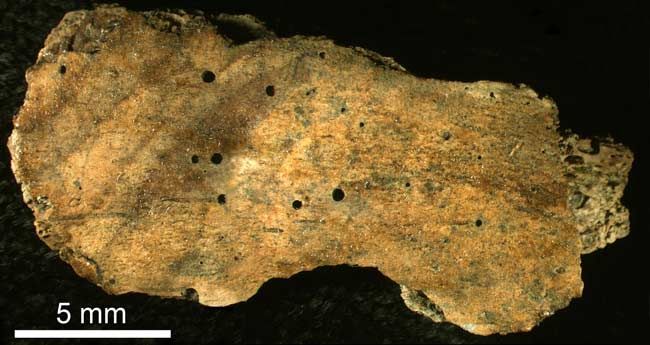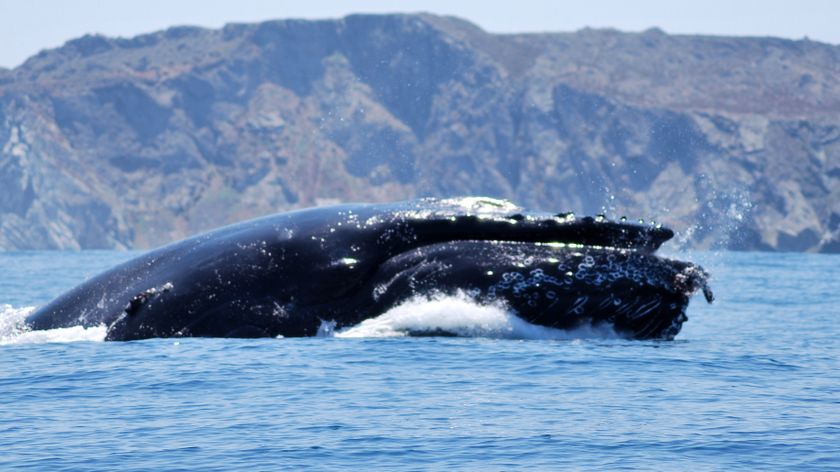Ancient Worms Munched on Whale Bones

Some 30 million years ago, alien-looking worms bored into the bones of a whale carcass. Now, for the first time scientists have discovered the whale fossils riddled with boreholes.
These so-called "boneworms" (of the genus Osedax), were first described six years ago based on specimens living on a whale carcass 9,485 feet (2,891 meters) below the ocean surface in waters off California. Last year, the discovery of new species of these strange ocean dwellers was announced.
When the larvae of these worms encounter a dead animal, such as a whale or elephant seal, they attach to the bones with root-like structures. The worms then sprout up, looking a bit like tiny trees.
Researchers at the Christian-Albrechts-University in Kiel, Germany, have now found whale bones with holes and excavations matching those of living Osedax in size and shape, suggesting that boneworms have been around in the oceans for quite some time.
The fossil holes were compared to current specimens left by boneworms provided by Greg Rouse of the Scripps Institution of Oceanography in La Jolla, Calif., one of the original discoverers of Osedax.
The team scanned the newly identified bones with computed tomography. The resulting images and other information suggested the fossil bones belong to ancestors of our modern baleen whales. Co-occurring fossils helped the scientists date the whale bones.
"The age of our fossils coincides with the time when whales began to inhabit the open ocean," said Steffen Kiel, who has been working on the evolution and fossil history of deep-sea ecosystems for many years.
Sign up for the Live Science daily newsletter now
Get the world’s most fascinating discoveries delivered straight to your inbox.
The discovery says something about the availability of food in the deep parts of the sea underneath the open ocean.
"Food is extremely rare on the vast deep-sea floor and the concurrent appearance of these whales and Osedax shows that even hard whale bones were quickly utilized as food source," Kiel said.
The ancient bones were found by the American fossil collector Jim Goedert, who has been collecting fossils along the American Pacific coast for more than 30 years. This area is a geologically active one where fossil-rich sediments are continuously uplifted by plate tectonic processes.
The fossil finding is detailed in the April 19 issue of the journal Proceedings of the National Academy of Sciences.
- Dangers in the Deep: 10 Scariest Sea Creatures
- 10 Amazing Things You Didn't Know about Animals
- 25 Amazing Ancient Beasts












